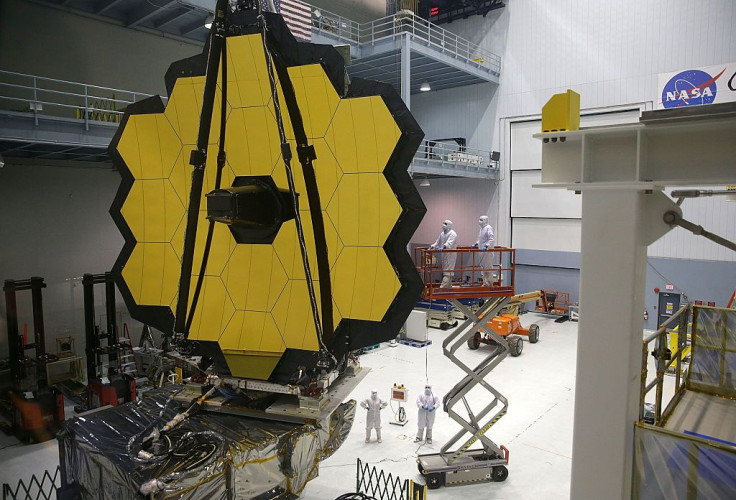James Webb Space Telescope’s Spacecraft Loses Screws, Washers During Test

The team behind NASA’s upcoming James Webb Telescope has a new problem to deal with — falling of screws and washers from the spacecraft element that is meant to carry and provide support functions for the operation of the multi-billion dollar space observatory.
During the recent set of environmental testing at Northrop Grumman facility in Southern California, technicians found the fallen parts under the spacecraft bus and its sunshield, SpaceNews reported. The craft and its parts are critical for the success of the mission, but the issue does not relate to optical and other instruments packed with the telescope.
The problem was revealed by NASA's JWST program director Greg Robinson at the National Academies’ Space Studies Board on May 3.
“Right now we believe that all of this hardware — we’re talking screws and washers here — come from the sunshield cover,” Robinson told the news outlet. “We’re looking at what this really means and what is the recovery plan.”
The five-layer sunshield of the craft is nearly as big as a tennis court and is made from a heat-resistant material called Kapton. Its sole job is to keep the telescope in shade and protect it from its own as well as external light and heat.
The fallen screws came to the technicians' notice a few days ago after the spacecraft was moved from one chamber to another. It had completed acoustic testing and was slated to undergo vibration tests in the second chamber. Apart from this, Robinson did not reveal too many details about the fault in question, but he did reiterate the importance of the testing phase which could bring problems like these into the light.
“It’s not terrible news, but it’s not good news, either,” he added.
That said, it is worth noting that this is not the first glitch witnessed by James Webb Space Telescope prior to its launch. Earlier, the telescope was set to lift-off in spring 2019, but due to tears in the sunshield of its spacecraft, leaks in propulsion thruster valves, and other technical glitches, the space agency pushed back the launch timeline by almost a year to May 2020. It even chartered an independent review board to keep a track on mission progress, assess launch readiness and identify the needs to ensure its success.
The review will be completed by the end of May and the agency will provide the report to Congress in June. According to Robinson, the report could have an impact on the tentative launch date, but the latest glitch encountered is unlikely to bring a change in the scheduled launch timeline. This is primarily because they curated this revised schedule with enough margin to bear glitches like these and follow it.
“I still believe we’ll go in 2020, in roughly the same timeframe that we talked about, unless this problem takes longer than we expect,” he added.
© Copyright IBTimes 2024. All rights reserved.




















